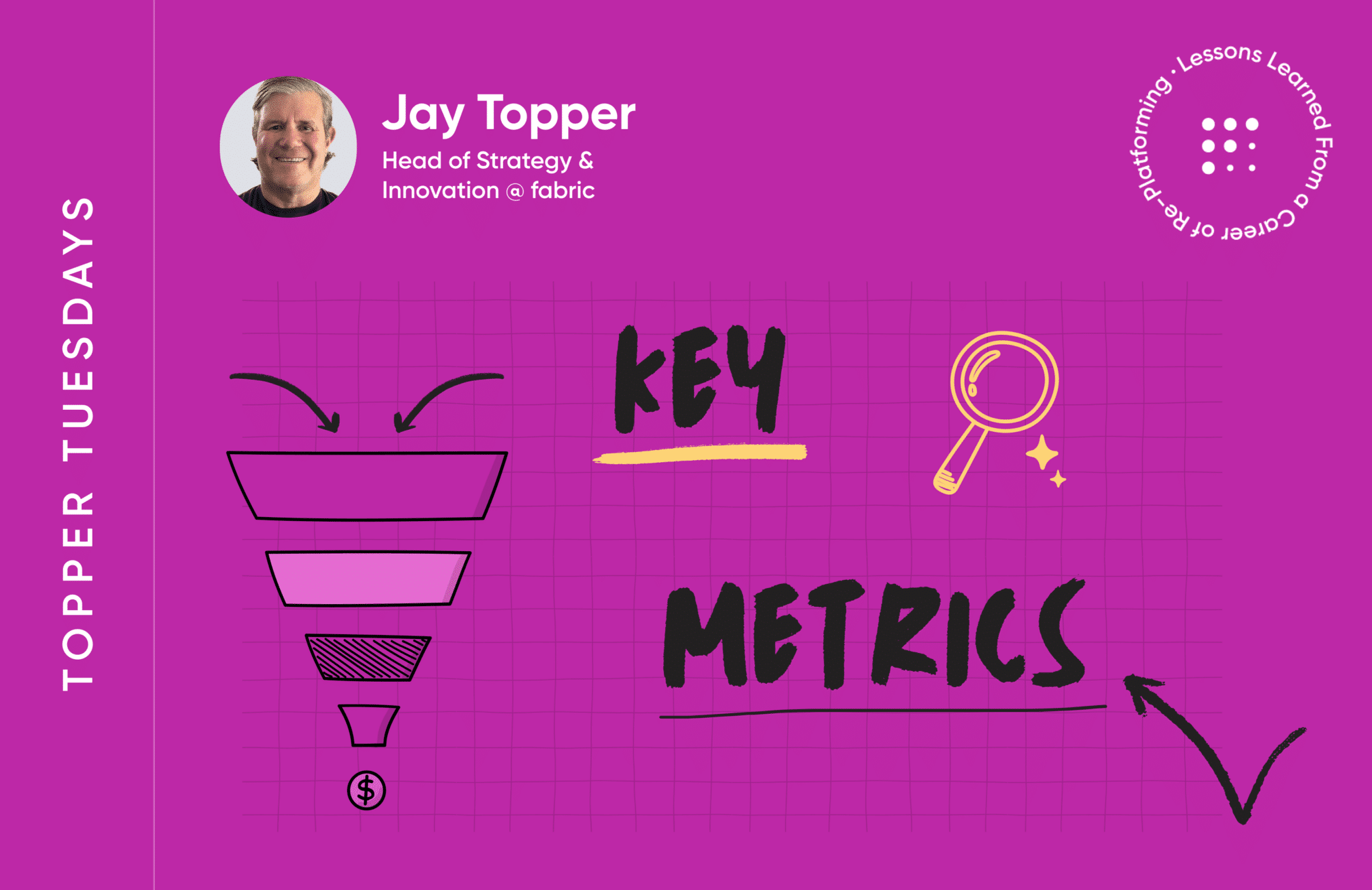Replatforming for Outcomes: Metrics That Matter! (1 of 2!)

Hopefully, you are in a place where the majority of your discretionary spend is targeted towards initiatives that have a clear return on investment (ROI). There are certainly capital expenditures tied to non-ROI projects like upgrading ERPs, deploying new servers and storage, and others Necessary perhaps, but the more you spend on return-based initiatives the healthier your company will be.
My first replatforming blog post, Why Replatform?, was centered around clearly articulating the business issues and expected outcomes you seek. In this post, I will break down a set of KPIs that cover a huge swath of commerce!
Remember, every single initiative should have a measurable outcome whenever possible. For many, this will be rote, but for some, it will be a new and different way to look at outcome-based investment. As I proofread this post (today is Tuesday, and it’s due Friday!!!), part of me thinks it is too basic, yet the other part thinks it’s too “thick.” So, I hope that means I have about the right balance.
Finding the metrics that matter
The majority of the retailers I have served were focused on revenue and EBITDA, with bonuses often equally split between the two. Stock prices also move because of these metrics, and the value of equity increases. Other retailers also add in large enterprise initiatives and/or a customer metric like NPS.
Now let’s dive into a leveled approach to determining the KPIs that matter to you, focusing on revenue and EBITDA. For each, we’ll start at the top level and then drop down a few levels to highlight what can actually move the needles that matter to your business. I don’t envision this is new to a lot of people, and I am sure there are other perspectives!
Revenue rules!
Level 1A: If someone asks me what are THE MOST IMPORTANT KPIs for a retailer, I will generally answer:
(Size of the active customer file) ✕ (Average customer spend over a given time)
This is basically lifetime value (LTV). To move the revenue needle, one half of this equation must grow greater than the other drops, or both must rise. It’s simple math. If I could choose anything in business to improve, it would be to have more customers and have their average spend grow in whatever time frame.
Level 1B: Another revenue math equation!
Traffic ✕ Conversion ✕ (Average order value) = Revenue
This would always be over a given period. It’s the “shopping” way to look at revenue versus the customer way shown above. Every other revenue variable can fit into one of these three variables — traffic, conversions, or AOV have to increase to grow revenue — and outpace any that decrease.
Lower-level revenue metrics then include the following. This list is not all-inclusive! But, you get the idea.
Level 2:
- Churn (how many customers stop shopping during a specified period of time)
- Net new customers
- Sales per square foot (for physical stores)
- Contribution margin by marketing channel (my favorite — see below!)
- OOS (out of stocks)
- Returns
- ROI of all capital spend
- Average unit retail (feeds AOV)
- Units per transaction (feeds AOV usually)
- Aggregate Email performance (often one of the biggest, cheapest channels)
Level 3:
- Email stats (open rate, click-through rate, etc.)
- Bounce rates
- Abandon carts
- Opt-out rates
- Site speed
- Search results to order (website)
- Click to deliver (in days)
- Coupon usage re: catalog
- Uptime
- Conversion by channel / by device type
Having 20 to 30 (or so) KPIs will help you measure the impact of any initiatives, testing results, capital improvements, and other changes. Quantifying impact is critical, as is knowing each initiative’s eventual impact on the Level 1 metrics. For example, it’s helpful to know that every 5 points of NPS leads to a 1% increase in existing customers returning.
EBITDA: It all adds up!
OK, let’s move on to the favored measure of profitability: EBITDA (+ cash). I like cash even more than EBITDA (Capex isn’t free!), but I’ll stick with EBITDA since that is a more common metric used to calculate bonuses, and we all want to get paid!
Level 1:
- Gross margin
- Acquisition cost / per customer
- G&A costs (% of revenue)
Level 2:
- OOS (revenue and margin killer)
- Overstocks (discounts and markdowns!)
- Cost to fulfill (by order)
- Cost to ship (by order)
- Cost to serve all channels (by order)
- Cost to sell (call center)
- Return rates
- Inventory write-offs
Level 3:
- Real estate (cost per square foot)
- % discount/promotion per order
- % self-service
- Service calls per order
- Quality and sample costs (product)
- Non-ROI capital as a % of capital (snuck this one in here)
- Logistics costs (air vs. ships, etc.) per unit
- Raw material costs if applicable
- Travel costs
- Utilities
This list is also obviously not all-inclusive, and illustrative. There are dozens more sub-metrics, and with some brainstorming cross-functionally you can create 3-4 levels of “ladder-up” metrics that end at the top: What matters most to your company — and then drive accountability for both new initiatives and even daily operations.
Here are a few simple ways to use these metrics. It’s good to remember that the higher the level of the KPI impacted, the more accretive for your company because they are more directly impacting the P&L.
- You implement a new order tracking system (I like parcelLab, but there are others). As a result of the proactive communications, control of messaging, and simplification of returns, your top three metrics to track are:
- Call volume, especially the “Where is my order?” (WISMO) calls (this impacts EBITDA)
- NPS uptick from better communications (revenue, LTV)
- Sales from more personalization of upsells at order confirmation and delivery confirmation (revenue)
- You change shipping carriers, which usually happens for cost but hopefully also improves service (USPS anyone?). Metrics to track are:
- Cost/order to ship — this is an obvious one (EBITDA)
- NPS by carrier — if you can test it all the better. I have seen measurable differences in repeat customers simply because of a carrier change (revenue).
Biggest Challenge: Revenue and EBITDA are often competing metrics. Sometimes, it can be hard to be a growth story with 50% of incentives tied to EBITDA, especially with variable marketing. That’s a blog post for a different day! The point is, if you can ascertain which is REALLY more important, growth or profit, it can help guide your discretionary spend (Opex and Capex). Whether these are balanced KPI’s or one is more important than the other — Contribution margin is a great contributor to guide initiatives and behaviors.
That’s a wrap!
A brief primer! Hopefully, there’s something new for everyone!
See ya next week!!! Two more posts to go on this series, and then I’ll shift out of replatforming mode and offer slightly broader views on all things retail!
In the next Topper Tuesday, Part 2 of 2 in Metrics that Matter: My Love of Contribution Margin!
- My favorite all-time report!
- Why I love the impact it can have and a simple actual construct of the rep
Toppers Tips & Tricks: Outcomes for Metrics That Matter!
- Know your company’s income statement frontwards and backward
- Agree enterprise-wide on what the expectations are of a particular initiative.
- Build your big bets around what matters most, usually your level 1 metrics.
- ALWAYS go back and review ROI proclamations, even if you fail. Too often, these are just forgotten.
- Non-ROI Capex — well, let’s just say, be cautious. Problem-avoidance Capex doesn’t feed business results
- Ensure your partners are vested in your declared outcomes!

Advisor @ fabric